← Back to Reviews
in
"A love story is like a song: it's beautiful while it lasts..."
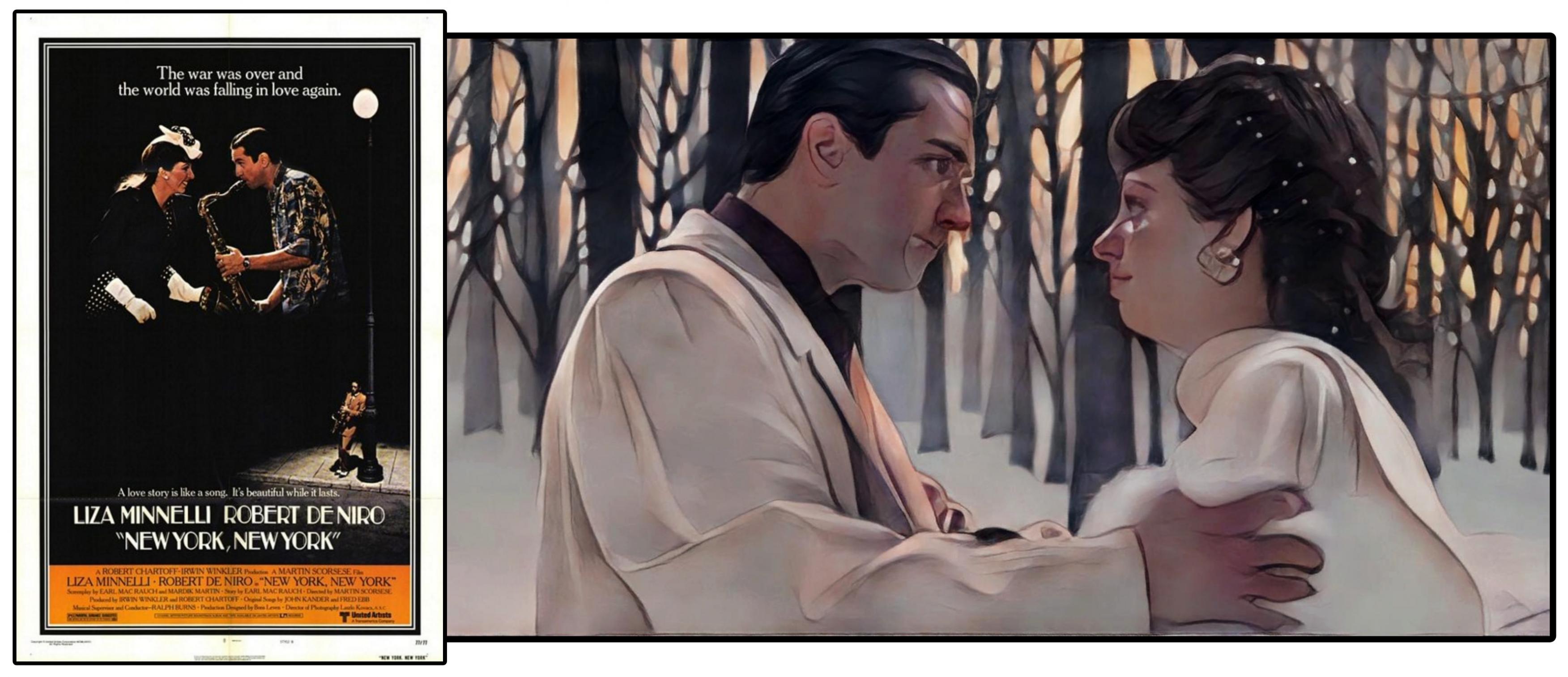
New York, New York (1977) is far and away Scorsese's least liked and most universally derided film. It was a huge critical and financial disappointment upon its release in 1977. Today, even with it being a Scorsese/DeNiro collaboration, it is so little known that few probably even realize the song "New York, New York" (properly titled "Theme from New York, New York") is from this film (you know, "These little town blues, are leaving today, I'll make a brand new start of it...", etc.). Its reputation is so bad that I don't think anyone even gives it a chance. But while far from his masterpieces, New York, New York is an interesting movie, and has strong points to recommend.
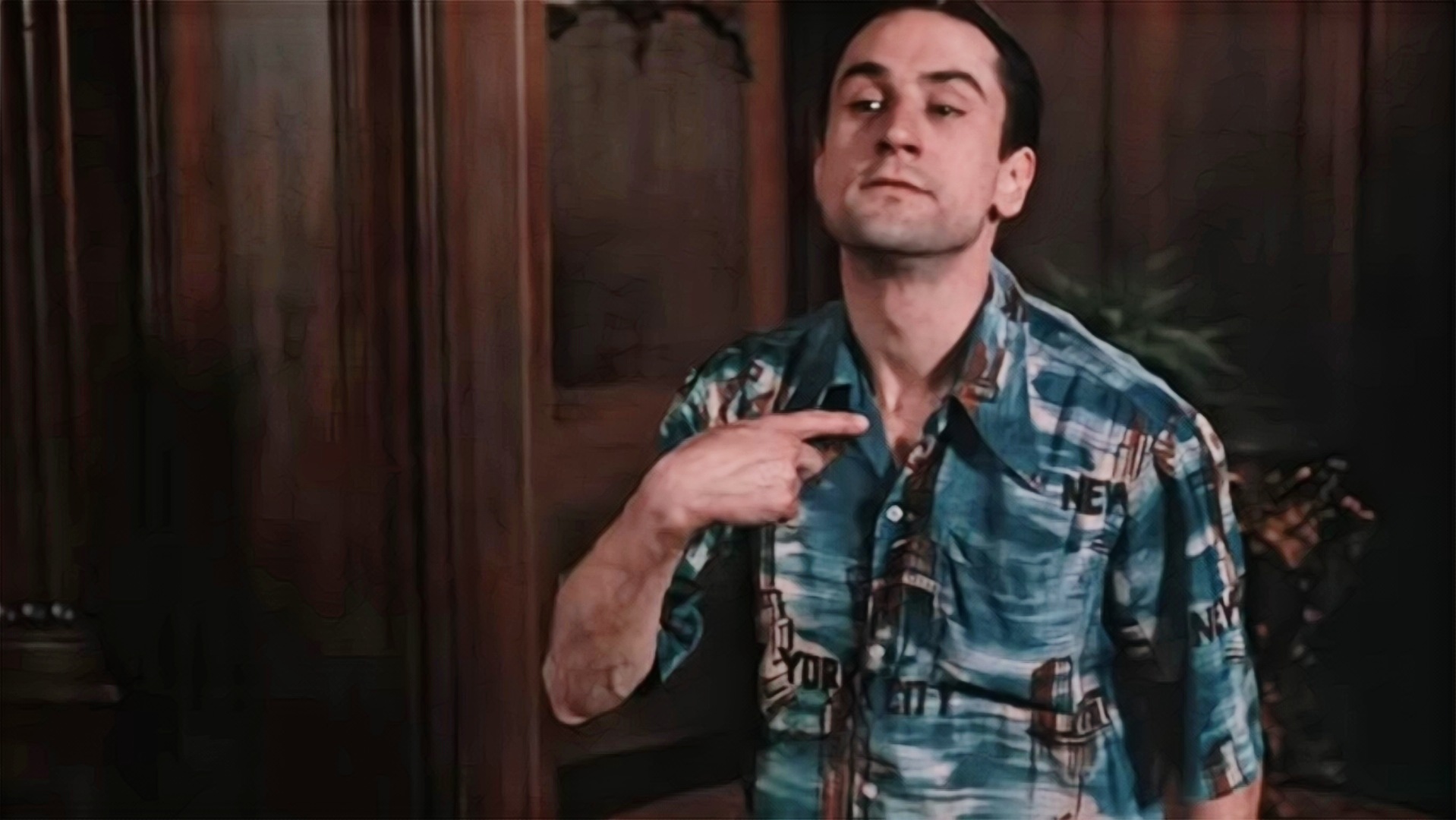
The story opens with the crowded happy streets in the middle of Manhattan on V-J Day, 1945. Through the celebratory crowd the camera finds Jimmy Doyle (DeNiro), a fast-talking overly-confident schemer in a loud shirt. While trying to score from gal to gal in their post-war euphoria, he comes up against Francine Evans (Liza Minnelli), a WAC sitting alone because one of Jimmy's pals has escorted her friend away to the dance floor (and later a hotel room). Jimmy tries half-heartedly to pick Francine up, but she's not the least bit interested. So naturally Jimmy tries harder, until he won't leave her alone unless she agrees to give him a chance. Francine isn't just being coy, she instantly sees through Doyle's horsesh!t. This both angers and intrigues him.
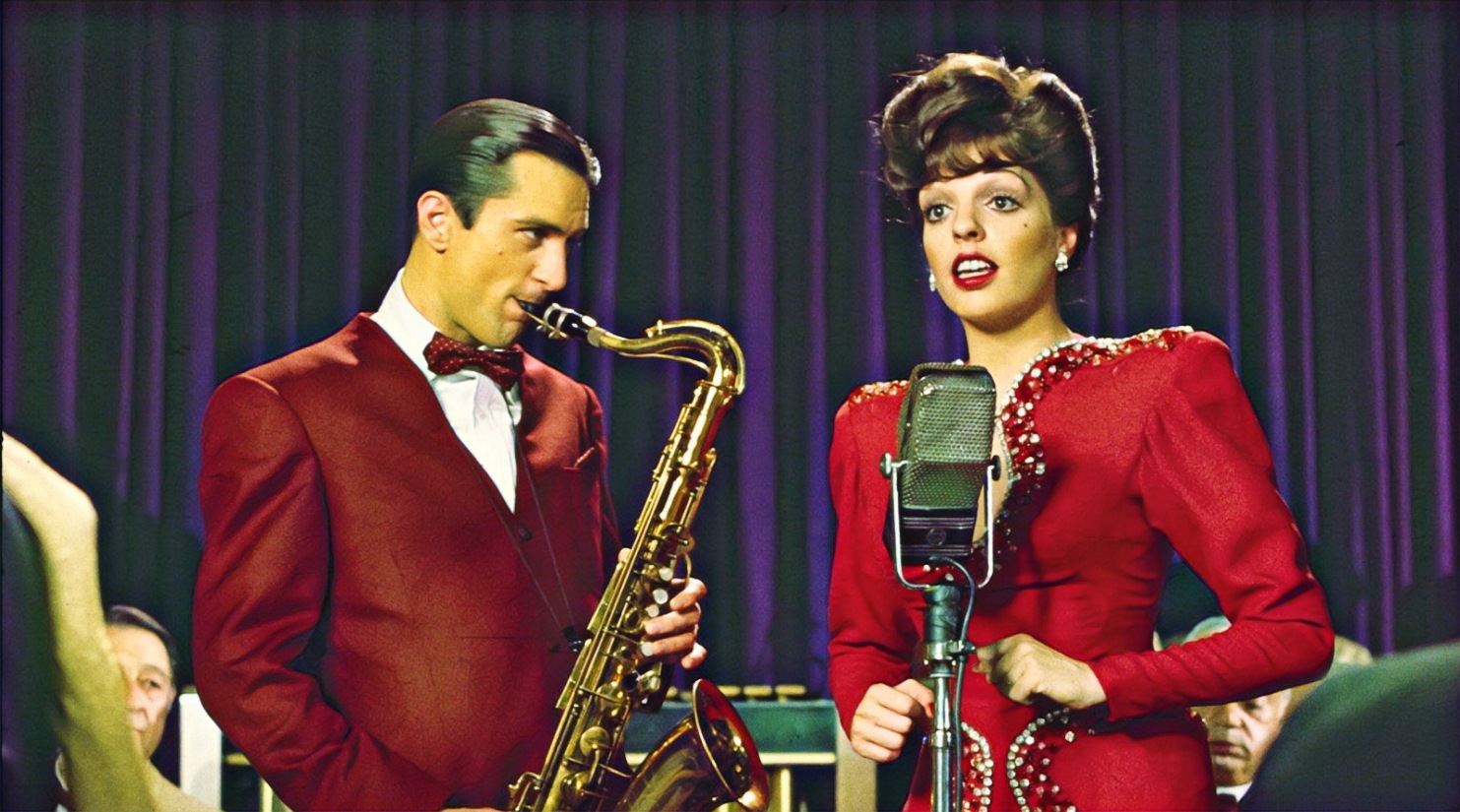
The next day they somehow wind up in a cab together and she learns he's a musician, a saxophonist. She accompanies him to an audition where he's trying to be the house bandleader in a mid-sized club. When it starts going badly and Jimmy is just about to be thrown out for his temper and unwillingness to compromise, Francine stands up and starts crooning - turns out she's an aspiring singer in her own right. The club owner loves them as a double act, and they're thrown in together. Jimmy is not only a first-rate sax player, but also a gifted composer, though his tastes run more toward the burgeoning BeBop movement up in Harlem, not the popular music of the day. Francine on the other hand is perfectly suited for the mainstream, a star waiting to happen. She's attracted to Jimmy's talent and artistry, so against her better judgment they become lovers as well as co-workers.
And that's the central conflict and background of New York, New York. It sounds like any number of Musicals from the '30s or '40s, and of course that is intentional. It's even a very loose re-working of a 1946 Raoul Walsh flick called The Man I Love, which starred Ida Lupino. But it could just as well have used any number of those Musical melodramas as a blueprint. Scorsese is a fan of that time period and those types of films, so in many ways his New York, New York is an hommage. But Marty also tried to add something of his own time and experience, and it's an experiment with mixed results.
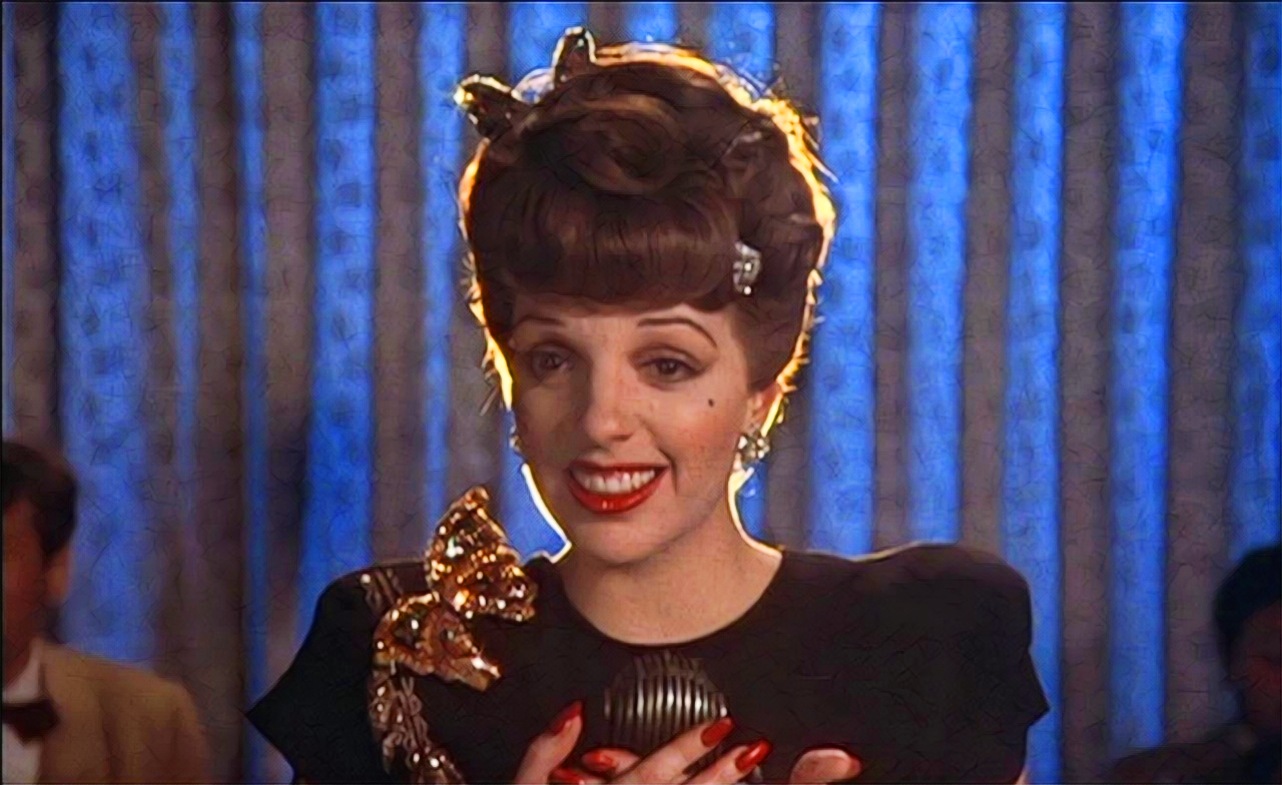
Scorsese's central idea was to use the frame of that genre as well as its visual style and signature - such as big sets and a patterend Technicolor look, but the new wrinkle added would be the characterizations and the pacing, which would be more akin to Cassavetes, with lots of improvisation and a frankness in dealing with subject matter that in the 1940s would have been unsavory or off-limits. There are times this unlikely combination works perfectly, perhaps the best example being the scene where Jimmy and Francine meet and argue back and forth on V-J Day. The freshness is clearly due to improvisation, and it melds seemlessly with the stylized look at sets. But there are other instances, especially in the last third of the movie, where this combo falls flat. The acting and character work, while true and convincing in the context of the particular scene, is simply out of place against the backdrop and doesn't link up well with what is before or after it. There is a lack of coherence in the idea by the end parts of the flick.
So that's both the essential strength and the fatal flaw of the project: it tries for something ambitious and new, and when it works it's marvelous, but when it doesn't it's awkward. Todd Haynes tried something similar with last year's Far From Heaven, using the tone, style, visual fabric and plot conventions from the '50s melodramas of Douglas Sirk, but with subject matter and performances from a more modern perspective. For me personally, I think New York, New York is more ambitious and more successful in this regard, but judging by critics and audience response, most would say exactly the opposite. Whichever you prefer, the experiment is very similar. Both also offer more levels to the viewer who is more familiar with the genres and films being used as reference points. If you know A Star is Born and The Best Years of Our Lives, the more you'll likely appreciate the attention to textual detail in New York, New York. Likewise, if you've seen All That Heaven Allows and Magnificent Obsession, you can marvel at the loving recreations and parallels in Far From Hevean.
I think Scorsese's idea mostly works, and the wonderful moments in New York, New York outweigh the hollow ones. But I can also see why critics and audiences would focus on the false notes.
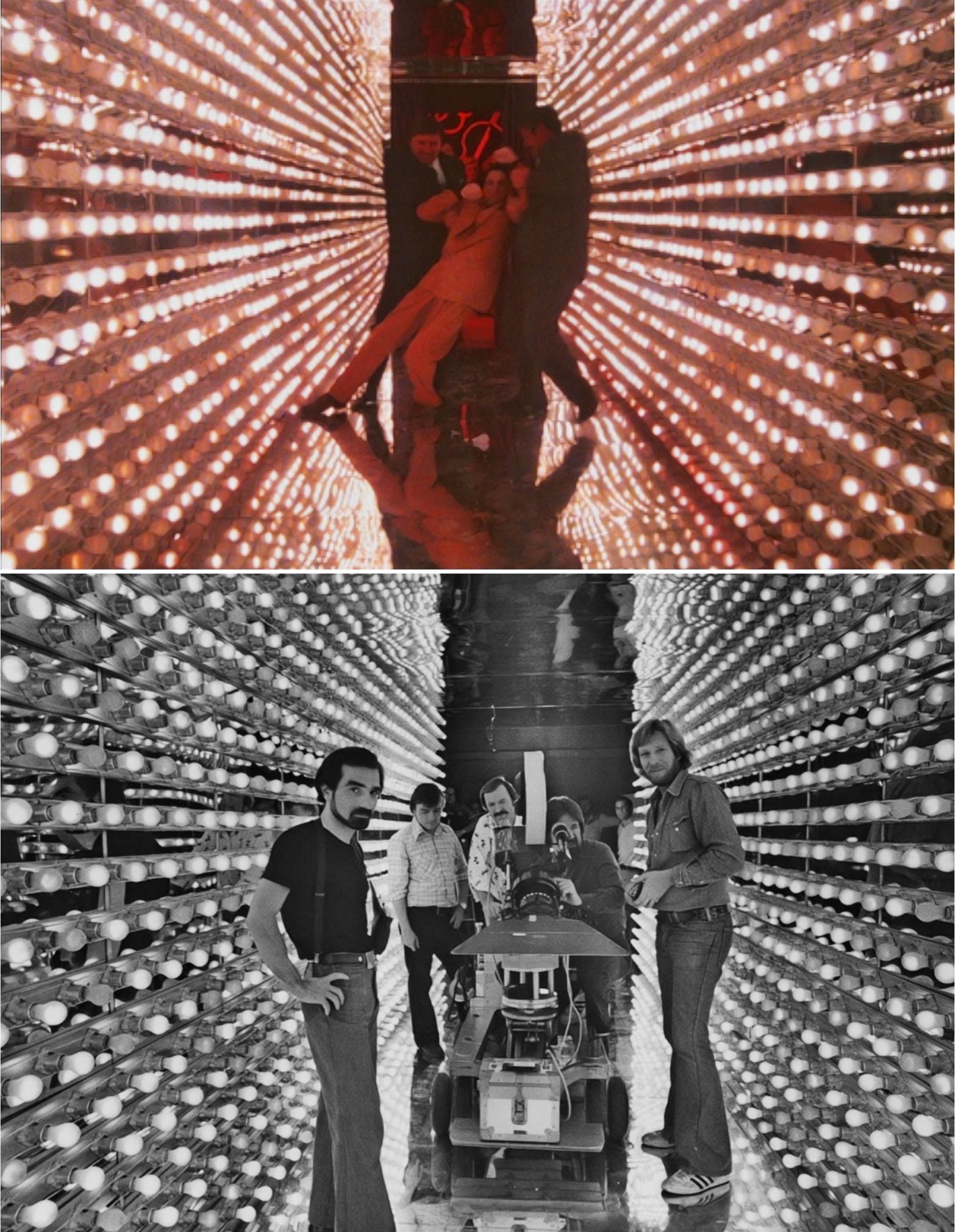
The performances of DeNiro and Minnelli in the leads also echo the stradling of two styles. Bobby D. has the look of a '50 leading man here, but his harshness and cruelty are definitely modern. His petty and jealous egomaniac who can't possibly give another person love is a darker and more complex version of the archetype from the '40s and '50s, an artist who uses his art as an excuse to treat the people around him like crap. And true to his Method, DeNiro learned how to play the saxophone before filming began - quite well, apparently. Minnelli, who had won the Best Actress Oscar only a few years before for Cabaret, is obviously used by Scorsese more than partially to echo her Mother and her Father's body of work - singing movie star Judy Garland being her mother, and director Vincente Minnelli - one of Marty's favorites - who helmed such classics as An American in Paris, Father of the Bride, Meet Me in St. Louis and The Bad & the Beautiful, being her Pop. Her singing and look automatically harken back to yesteryear, but she also gives an emotionally raw and layered performance seldom seen in that age.
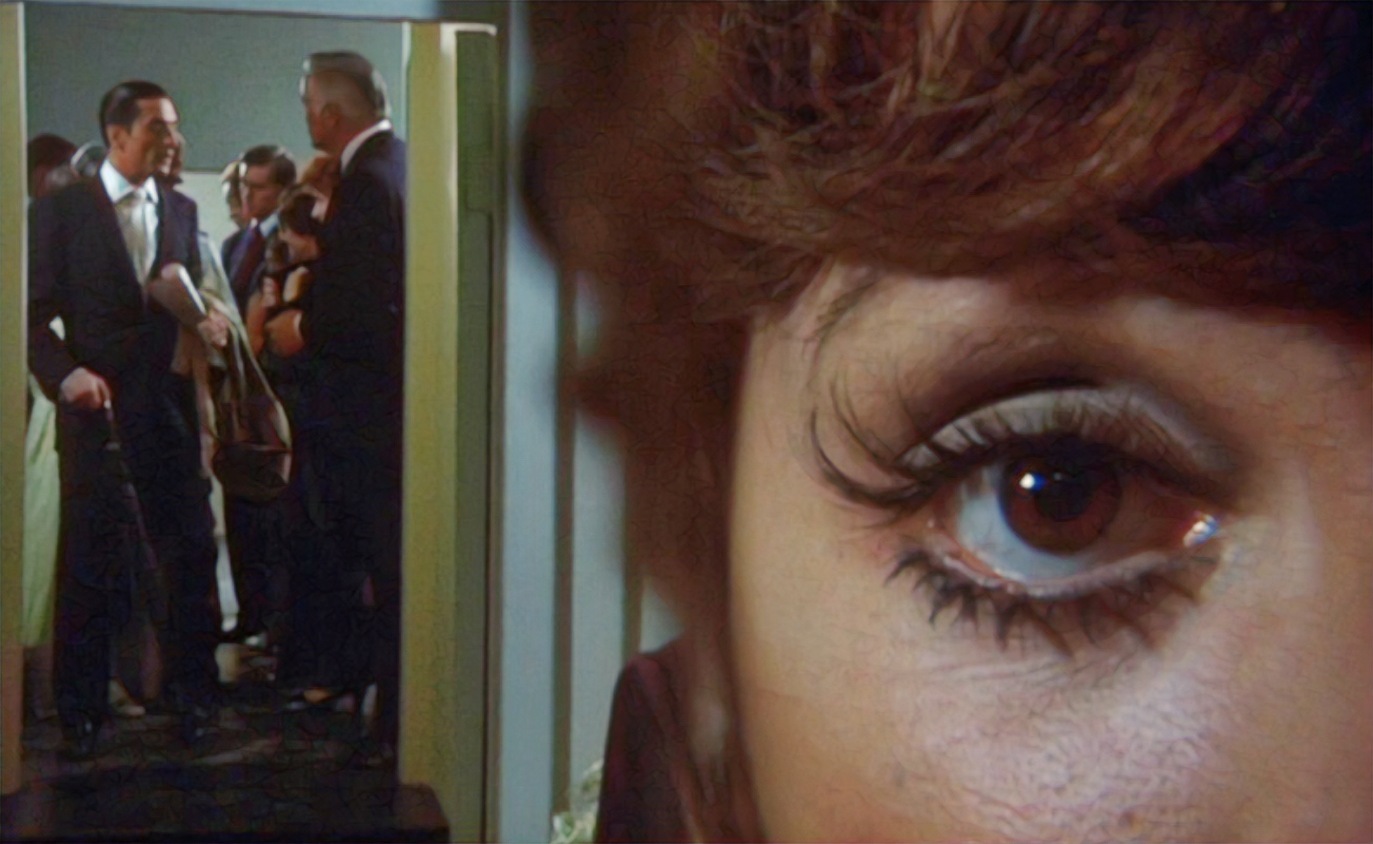
The rest of the cast includes Barry Primus, Lionel Stander and Mary Kay Place, but for all the minor characters and hundreds of extras, this is very much a two character movie.
The film ran nearly three hours on first release, and was later cut by about twenty minutes. Both versions were deemed too long for an experimental Musical by most who saw it. Years later in 1981, after the theme song had quickly become a standard (thanks in large part to Frank Sinatra's rendition) and Scorsese was a darling again after the critical success of Raging Bull, an even longer version was released, including an elabroate production number near the end that was filmed before but never used, "Happy Endings", similar in size and complexity to the "Broadway Melody" showpiece at the center of Singin' in the Rain. Again the movie was deemed unweildy and a failure by the majority.
But I think it's worth taking a chance on and discovering for yourself. It definitely has a strong love-it/hate-it thing going on. Those who love it tend to overlook the flaws and are wowed by the brilliance and execution of such a tricky idea. Those who hate it see the flaws more vividly than anything else, so the pacing and length become a torture and the mix incongruous. At least it's not a viewing experience you're likely to come away from with no opinion at all, and perhaps that's reason enough to recommend it. Plus the music is terrific (shockingly, "New York, New York" was not even nominated for best original song at that year's Oscars, where Debbie Boone's sappy "You Light Up My Life" somehow beat out Carly Simon's Bond tune "Nobody Does it Better").
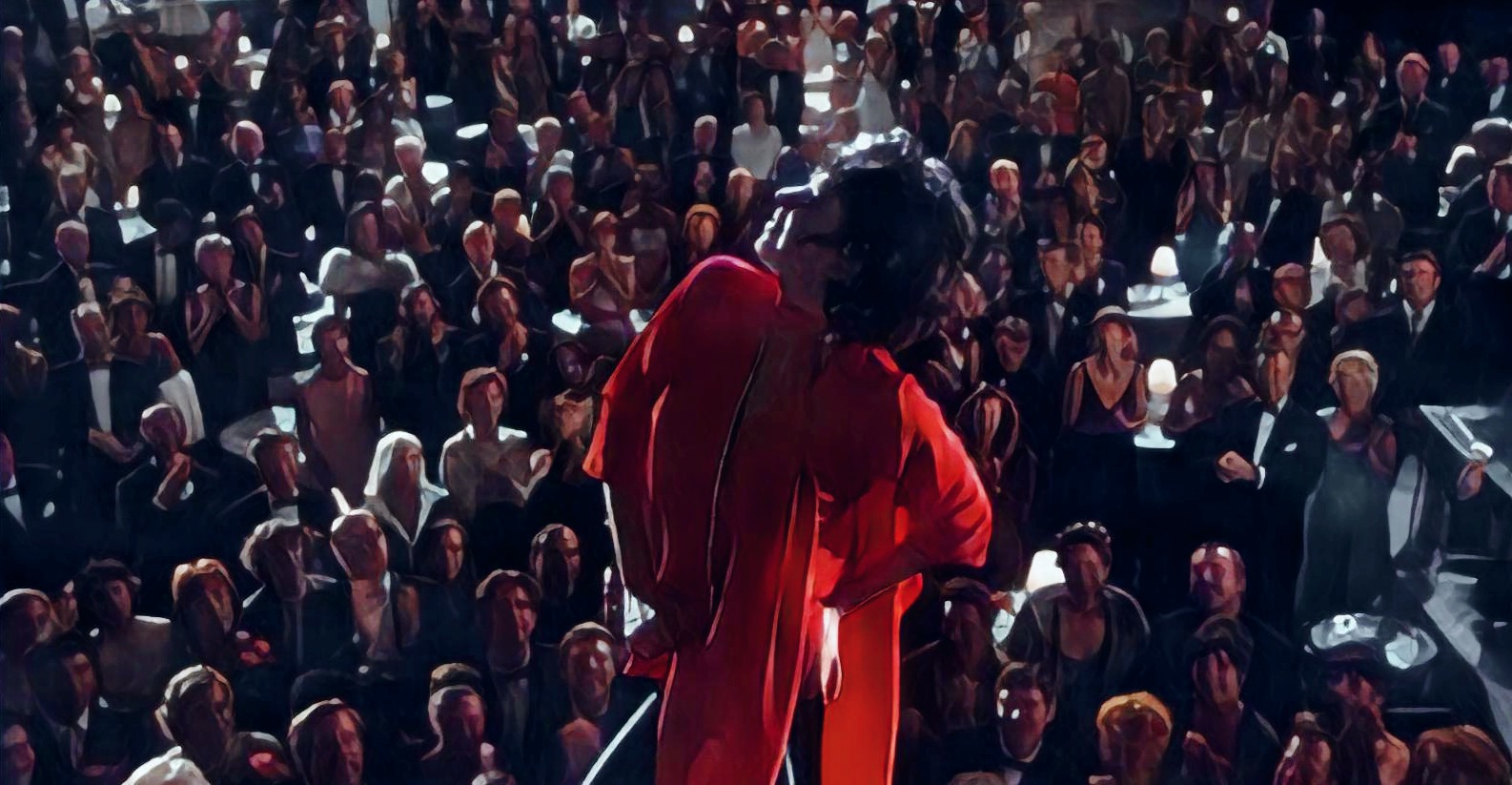
"These vagabond shoes, are longing to stray..."
New York, New York (1977) is far and away Scorsese's least liked and most universally derided film. It was a huge critical and financial disappointment upon its release in 1977. Today, even with it being a Scorsese/DeNiro collaboration, it is so little known that few probably even realize the song "New York, New York" (properly titled "Theme from New York, New York") is from this film (you know, "These little town blues, are leaving today, I'll make a brand new start of it...", etc.). Its reputation is so bad that I don't think anyone even gives it a chance. But while far from his masterpieces, New York, New York is an interesting movie, and has strong points to recommend.
The story opens with the crowded happy streets in the middle of Manhattan on V-J Day, 1945. Through the celebratory crowd the camera finds Jimmy Doyle (DeNiro), a fast-talking overly-confident schemer in a loud shirt. While trying to score from gal to gal in their post-war euphoria, he comes up against Francine Evans (Liza Minnelli), a WAC sitting alone because one of Jimmy's pals has escorted her friend away to the dance floor (and later a hotel room). Jimmy tries half-heartedly to pick Francine up, but she's not the least bit interested. So naturally Jimmy tries harder, until he won't leave her alone unless she agrees to give him a chance. Francine isn't just being coy, she instantly sees through Doyle's horsesh!t. This both angers and intrigues him.
The next day they somehow wind up in a cab together and she learns he's a musician, a saxophonist. She accompanies him to an audition where he's trying to be the house bandleader in a mid-sized club. When it starts going badly and Jimmy is just about to be thrown out for his temper and unwillingness to compromise, Francine stands up and starts crooning - turns out she's an aspiring singer in her own right. The club owner loves them as a double act, and they're thrown in together. Jimmy is not only a first-rate sax player, but also a gifted composer, though his tastes run more toward the burgeoning BeBop movement up in Harlem, not the popular music of the day. Francine on the other hand is perfectly suited for the mainstream, a star waiting to happen. She's attracted to Jimmy's talent and artistry, so against her better judgment they become lovers as well as co-workers.
And that's the central conflict and background of New York, New York. It sounds like any number of Musicals from the '30s or '40s, and of course that is intentional. It's even a very loose re-working of a 1946 Raoul Walsh flick called The Man I Love, which starred Ida Lupino. But it could just as well have used any number of those Musical melodramas as a blueprint. Scorsese is a fan of that time period and those types of films, so in many ways his New York, New York is an hommage. But Marty also tried to add something of his own time and experience, and it's an experiment with mixed results.
Scorsese's central idea was to use the frame of that genre as well as its visual style and signature - such as big sets and a patterend Technicolor look, but the new wrinkle added would be the characterizations and the pacing, which would be more akin to Cassavetes, with lots of improvisation and a frankness in dealing with subject matter that in the 1940s would have been unsavory or off-limits. There are times this unlikely combination works perfectly, perhaps the best example being the scene where Jimmy and Francine meet and argue back and forth on V-J Day. The freshness is clearly due to improvisation, and it melds seemlessly with the stylized look at sets. But there are other instances, especially in the last third of the movie, where this combo falls flat. The acting and character work, while true and convincing in the context of the particular scene, is simply out of place against the backdrop and doesn't link up well with what is before or after it. There is a lack of coherence in the idea by the end parts of the flick.
So that's both the essential strength and the fatal flaw of the project: it tries for something ambitious and new, and when it works it's marvelous, but when it doesn't it's awkward. Todd Haynes tried something similar with last year's Far From Heaven, using the tone, style, visual fabric and plot conventions from the '50s melodramas of Douglas Sirk, but with subject matter and performances from a more modern perspective. For me personally, I think New York, New York is more ambitious and more successful in this regard, but judging by critics and audience response, most would say exactly the opposite. Whichever you prefer, the experiment is very similar. Both also offer more levels to the viewer who is more familiar with the genres and films being used as reference points. If you know A Star is Born and The Best Years of Our Lives, the more you'll likely appreciate the attention to textual detail in New York, New York. Likewise, if you've seen All That Heaven Allows and Magnificent Obsession, you can marvel at the loving recreations and parallels in Far From Hevean.
I think Scorsese's idea mostly works, and the wonderful moments in New York, New York outweigh the hollow ones. But I can also see why critics and audiences would focus on the false notes.
The performances of DeNiro and Minnelli in the leads also echo the stradling of two styles. Bobby D. has the look of a '50 leading man here, but his harshness and cruelty are definitely modern. His petty and jealous egomaniac who can't possibly give another person love is a darker and more complex version of the archetype from the '40s and '50s, an artist who uses his art as an excuse to treat the people around him like crap. And true to his Method, DeNiro learned how to play the saxophone before filming began - quite well, apparently. Minnelli, who had won the Best Actress Oscar only a few years before for Cabaret, is obviously used by Scorsese more than partially to echo her Mother and her Father's body of work - singing movie star Judy Garland being her mother, and director Vincente Minnelli - one of Marty's favorites - who helmed such classics as An American in Paris, Father of the Bride, Meet Me in St. Louis and The Bad & the Beautiful, being her Pop. Her singing and look automatically harken back to yesteryear, but she also gives an emotionally raw and layered performance seldom seen in that age.
The rest of the cast includes Barry Primus, Lionel Stander and Mary Kay Place, but for all the minor characters and hundreds of extras, this is very much a two character movie.
The film ran nearly three hours on first release, and was later cut by about twenty minutes. Both versions were deemed too long for an experimental Musical by most who saw it. Years later in 1981, after the theme song had quickly become a standard (thanks in large part to Frank Sinatra's rendition) and Scorsese was a darling again after the critical success of Raging Bull, an even longer version was released, including an elabroate production number near the end that was filmed before but never used, "Happy Endings", similar in size and complexity to the "Broadway Melody" showpiece at the center of Singin' in the Rain. Again the movie was deemed unweildy and a failure by the majority.
But I think it's worth taking a chance on and discovering for yourself. It definitely has a strong love-it/hate-it thing going on. Those who love it tend to overlook the flaws and are wowed by the brilliance and execution of such a tricky idea. Those who hate it see the flaws more vividly than anything else, so the pacing and length become a torture and the mix incongruous. At least it's not a viewing experience you're likely to come away from with no opinion at all, and perhaps that's reason enough to recommend it. Plus the music is terrific (shockingly, "New York, New York" was not even nominated for best original song at that year's Oscars, where Debbie Boone's sappy "You Light Up My Life" somehow beat out Carly Simon's Bond tune "Nobody Does it Better").
"These vagabond shoes, are longing to stray..."
